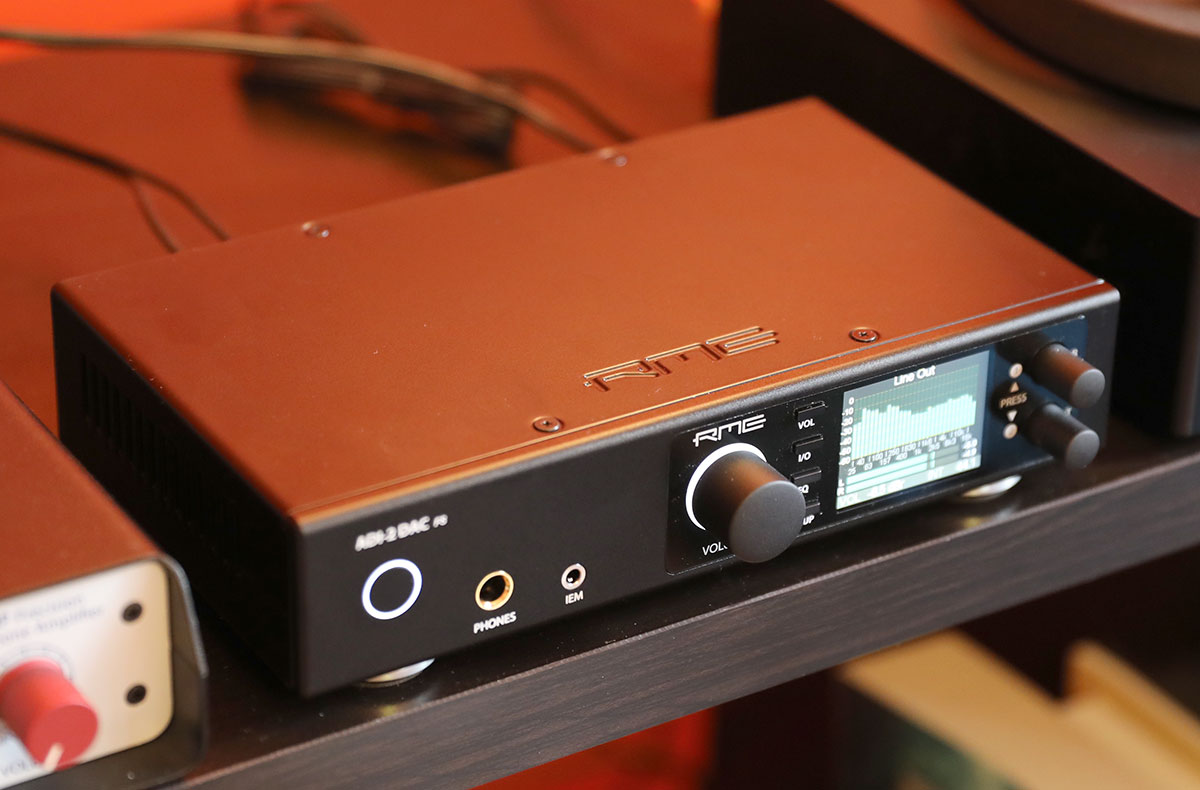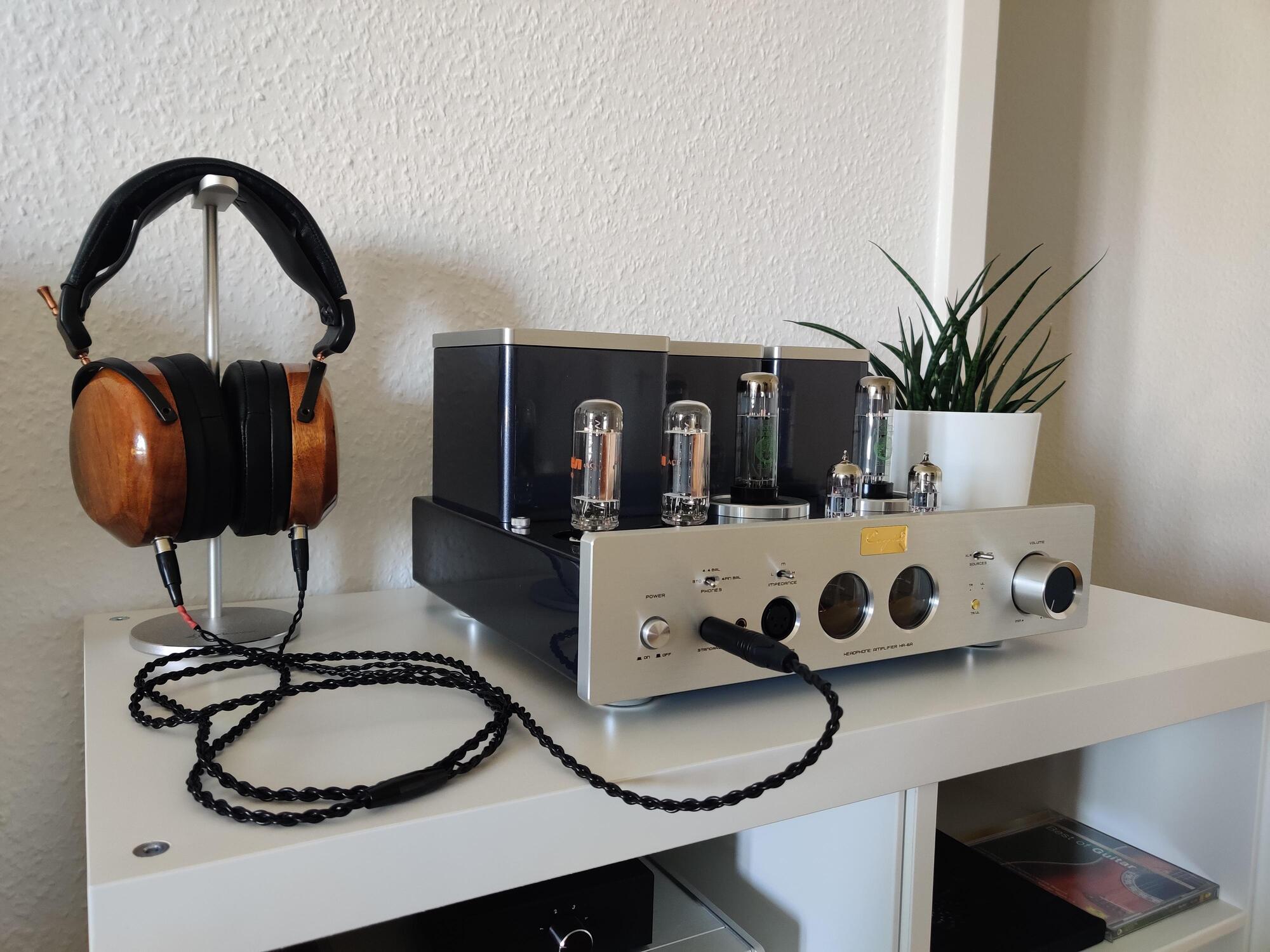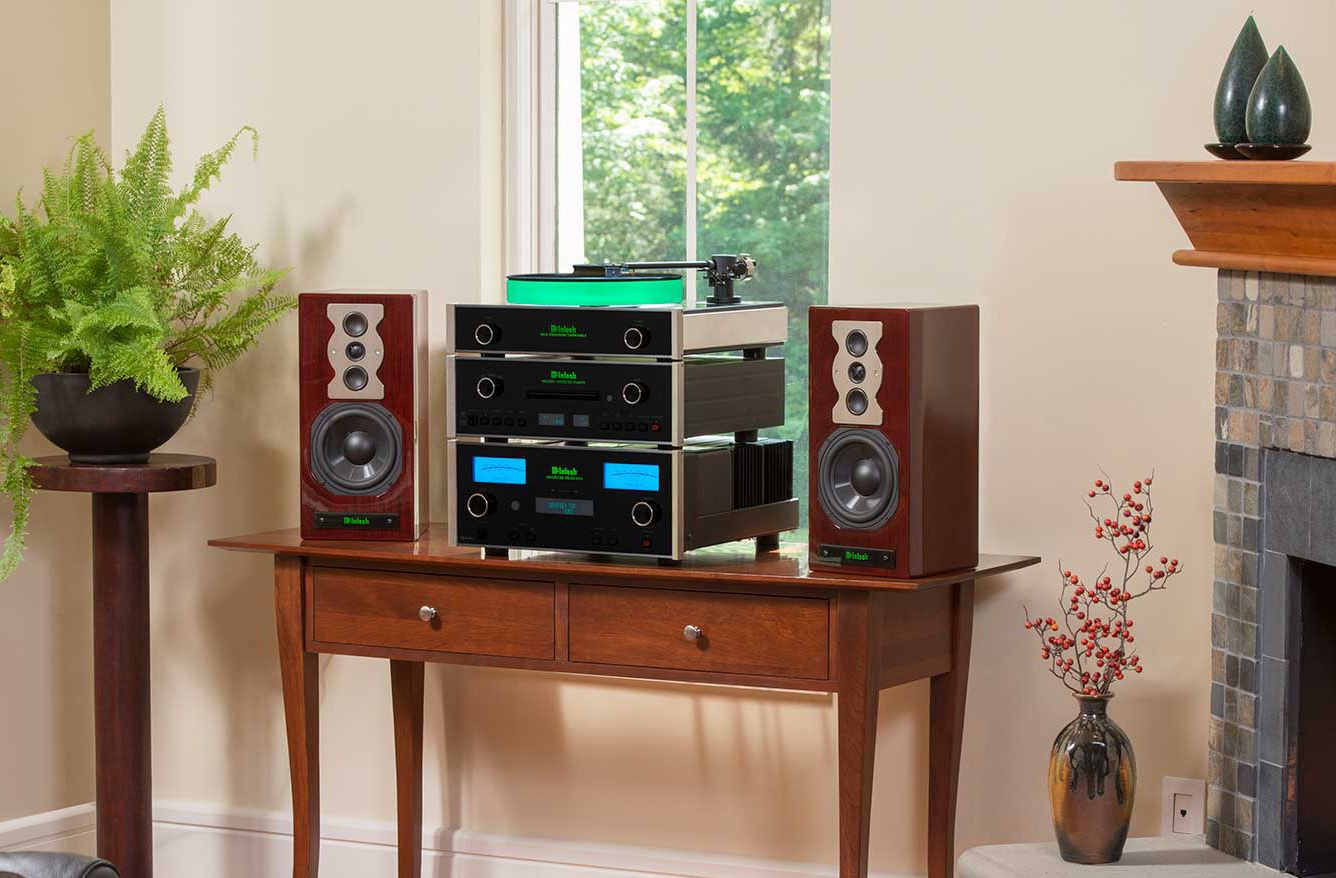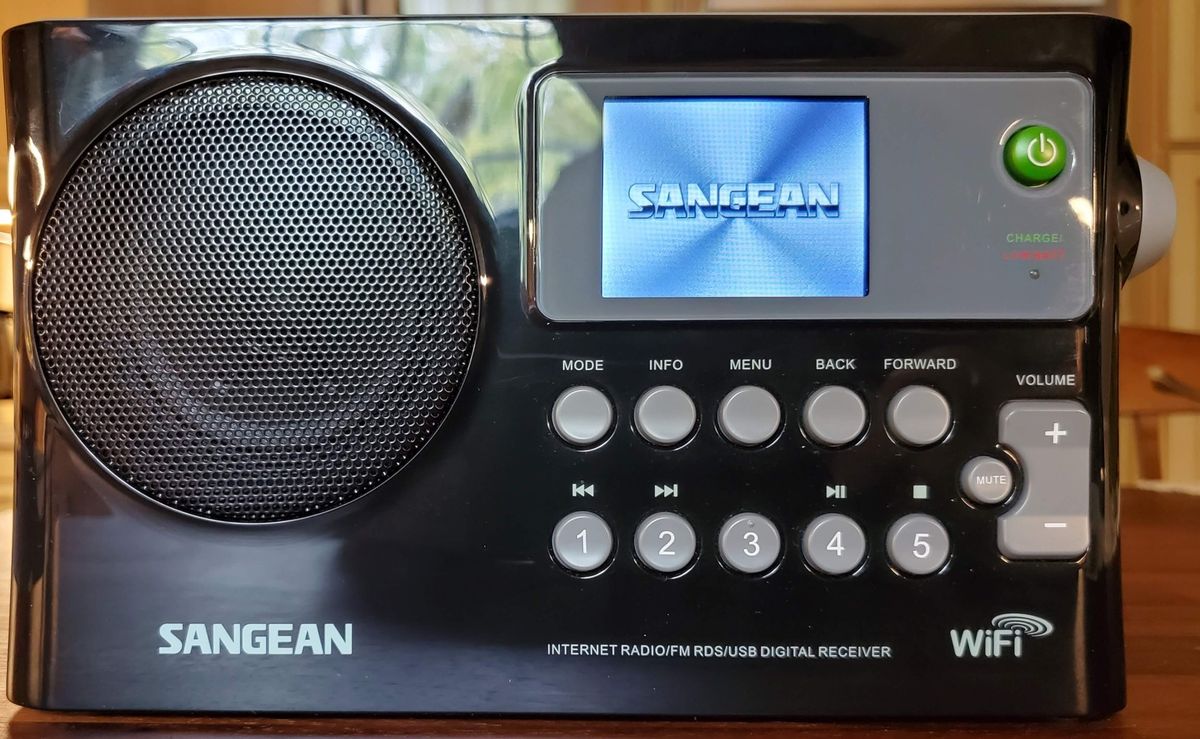Home>Production & Technology>Audiophile>What Is The Audiophile Collection In The Internet Archive


Audiophile
What Is The Audiophile Collection In The Internet Archive
Modified: January 22, 2024
Discover the Audiophile Collection in the Internet Archive - a treasure trove of high-quality audio recordings for the discerning music lover. Immerse yourself in superior sound!
(Many of the links in this article redirect to a specific reviewed product. Your purchase of these products through affiliate links helps to generate commission for AudioLover.com, at no extra cost. Learn more)
Table of Contents
Introduction
Welcome to the fascinating world of audiophiles! Audiophiles are individuals who have a deep passion for high-quality audio reproduction. They seek out the finest sound equipment and meticulously curate their music collections to ensure a pristine listening experience.
In this article, we will delve into the Audiophile Collection in the Internet Archive, a treasure trove of audio recordings that will leave any music enthusiast in awe. But first, let’s understand what exactly the Audiophile Collection is and why it holds such significance.
The Audiophile Collection is a curated selection of audio recordings that have been meticulously chosen for their exceptional sound quality. From music albums and live concert recordings to rare and vintage recordings, this collection caters to the discerning ears of audiophiles everywhere.
The Internet Archive, the organization behind this impressive collection, is a non-profit digital library that is on a mission to provide universal access to all knowledge. Founded in 1996, the Internet Archive has become a pioneer in digital preservation, archiving millions of books, websites, videos, and audio recordings.
The preservation of audio recordings is of paramount importance in capturing the essence of musical performances and ensuring they are accessible to future generations. The Audiophile Collection plays a crucial role in this preservation effort, as it curates and presents a range of recordings that showcase the artistry and craftsmanship of the greatest musicians.
The availability and accessibility of the Audiophile Collection are what sets it apart. Unlike physical media, such as vinyl records or CDs, which may degrade over time or become obsolete, the digital format ensures that these recordings remain intact and can be enjoyed by anyone with an internet connection.
In the following sections, we will explore how to navigate the Audiophile Collection, the different formats and bitrates available, the contributions made by users, and the challenges faced in preserving such a vast collection. So, sit back, put on your favorite pair of headphones, and get ready to immerse yourself in the world of audiophile heaven!
What is the Audiophile Collection?
The Audiophile Collection is a curated selection of audio recordings within the Internet Archive that caters to the discerning ears of audiophiles. It is a rich and diverse collection of music albums, live concert recordings, rare and vintage recordings, and other audio gems that have been carefully chosen for their exceptional sound quality and artistic value.
What sets the Audiophile Collection apart is its dedication to preserving and showcasing recordings that capture the intricacies and nuances of musical performances. Audiophiles value the fidelity and authenticity of sound, and this collection aims to deliver an immersive listening experience that is as close to the original performance as possible.
From iconic albums by legendary artists to hidden gems from up-and-coming musicians, the Audiophile Collection encompasses a wide range of musical genres and eras. Classical symphonies, jazz improvisations, rock anthems, blues ballads, electronic compositions, and everything in between can be found within this comprehensive collection.
One of the remarkable aspects of the Audiophile Collection is its commitment to diversity and inclusivity. It covers not only mainstream commercial releases but also independent and niche recordings, ensuring that a broad spectrum of music is represented and celebrated.
The collection is constantly updated and expanded, with new recordings being added regularly. It is curated by a team of passionate experts who carefully select recordings based on their audio quality, historical significance, and relevance to audiophile culture.
Whether you are a seasoned audiophile with a refined ear or a curious music lover looking to explore high-fidelity recordings, the Audiophile Collection offers something for everyone. It creates a platform where music enthusiasts can discover, appreciate, and experience music in a way that brings out the true essence and beauty of the art form.
History of the Internet Archive
The Internet Archive, founded in 1996 by entrepreneur and digital librarian Brewster Kahle, is a non-profit organization dedicated to building a digital library of Internet sites, books, music, movies, and more. Its mission is to provide universal access to all knowledge, ensuring that valuable information and cultural artifacts are preserved for future generations.
From its humble beginnings, the Internet Archive has grown into a massive repository of digital content, hosting billions of resources and serving as an invaluable resource for researchers, scholars, and the general public alike.
The concept of the Internet Archive was born out of the realization that the digital landscape was constantly evolving and that valuable online materials were at risk of being lost or becoming inaccessible. Today, the Internet Archive’s Wayback Machine is perhaps its most well-known feature, allowing users to view archived web pages and experience the internet’s historical development.
Within the Internet Archive, the Audiophile Collection is one of the many curated collections that showcase the organization’s dedication to preserving cultural and historical artifacts. It serves as a testament to the importance of audio recordings and their role in capturing the essence of human creativity and expression.
Over the years, the Internet Archive has expanded its efforts to include audio preservation, recognizing the power of sound to transport and connect people across time and space. It has partnered with various institutions, artists, and collectors to digitize and curate an extensive collection of audio recordings, ensuring their longevity and accessibility.
Through constant innovation and technological advancements, the Internet Archive continues to push the boundaries of digital preservation. It not only preserves the content itself but also strives to make it easily accessible to everyone, democratizing knowledge and promoting a culture of openness and sharing.
In an era where information overload is rampant and digital content is ephemeral, the Internet Archive’s mission takes on even greater significance. It stands as a beacon of preservation, a testament to the power of collective efforts in safeguarding our cultural heritage and ensuring that knowledge remains free and accessible to all.
Importance of Preservation
The preservation of audio recordings within the Audiophile Collection and the larger Internet Archive is of utmost importance. These recordings not only capture the essence of musical performances but also hold historical, cultural, and artistic significance. Preserving them ensures that future generations can experience and appreciate the breadth and depth of human creativity and achievement.
One of the primary reasons for preserving audio recordings is the documentation of history. Music has always been a reflection of society, capturing the emotions, values, and experiences of a particular time and place. By preserving these recordings, we can gain insights into different periods, cultures, and artistic movements, providing valuable context and understanding.
Furthermore, audio recordings serve as valuable cultural artifacts. They offer a glimpse into the evolution of musical styles, techniques, and instruments. From classical compositions to groundbreaking jazz improvisations and the emergence of new genres, these recordings showcase the beauty of artistic expression and the ever-changing landscape of music.
Preservation is also crucial because it ensures access to rare and hard-to-find recordings. The Audiophile Collection, in particular, features hidden gems and recordings that may not have received widespread commercial distribution. By preserving these recordings digitally, the Internet Archive extends their reach, allowing music enthusiasts from around the world to discover and appreciate lesser-known but influential works.
Another aspect of preservation is the safeguarding of recordings from deterioration or loss. Physical media, such as vinyl records or cassette tapes, can degrade over time due to factors like moisture, heat, and mechanical wear. Digitizing these recordings not only prevents them from being lost but also avoids the degradation of sound quality that occurs with repeated playbacks.
Preservation also allows for the restoration and remastering of older recordings. Technology has advanced significantly over the years, and it is now possible to enhance the audio quality of older recordings, removing distortions, reducing background noise, and improving the overall clarity of the sound. This restoration process brings new life to recordings that may have suffered from limitations of the technology available at the time of their creation.
Lastly, preservation fosters a sense of cultural continuity. It allows us to connect with the past, celebrate musical milestones, and appreciate the legacies of musicians who have left a lasting impact on the world. By preserving these recordings, we can ensure that future generations will have the opportunity to be inspired, educated, and entertained by the immense wealth of musical treasures contained in the Audiophile Collection and the Internet Archive as a whole.
Availability and Access
A key feature of the Audiophile Collection within the Internet Archive is its commitment to accessibility. The digitization of audio recordings and the online platform provide unprecedented availability, allowing users from around the globe to access and enjoy the vast selection of high-quality recordings.
The internet has revolutionized the way we consume and share music, and the Audiophile Collection takes full advantage of this digital landscape. With just a few clicks, music enthusiasts can explore a diverse range of genres, discover new artists, and indulge in their passion for exceptional sound quality.
Access to the Audiophile Collection is free of charge, aligning with the Internet Archive’s mission of providing universal access to knowledge. This democratization of music allows individuals who may not have the means to purchase or access physical media to engage with a wealth of extraordinary recordings.
Moreover, the online platform enables convenient and flexible access. Rather than being constrained by physical formats or limited availability, users can enjoy the Audiophile Collection anytime, anywhere, as long as they have an internet connection and a compatible device.
The Internet Archive also strives to make its collections accessible to individuals with disabilities. It is committed to adhering to accessibility standards, ensuring that everyone, regardless of their abilities, can access and appreciate the Audiophile Collection through appropriate assistive technologies.
In addition to the online platform, the Audiophile Collection is also available for download. This feature allows users to save recordings to their personal devices, giving them the flexibility to enjoy their favorite music offline or on the go.
Furthermore, the availability of the Audiophile Collection extends beyond audio recordings themselves. The Internet Archive incorporates comprehensive metadata, such as album information, track lists, and artist biographies, enriching the user experience and providing valuable context to enhance the appreciation of the music.
While the Audiophile Collection’s content is freely accessible, the Internet Archive also encourages contributions from its users. Users can upload their own high-quality recordings or share their personal recommendations for exceptional audio recordings to expand and diversify the collection further.
Overall, the availability and accessibility of the Audiophile Collection within the Internet Archive mark a significant shift in how we engage with and enjoy music. It brings together a global community of music lovers, fosters exploration and discovery, and ensures that exceptional sound quality is not limited to a privileged few, but accessible to all who appreciate the artistry and beauty of high-fidelity recordings.
How to Navigate the Audiophile Collection
Navigating the Audiophile Collection within the Internet Archive is an exciting journey through a vast landscape of high-quality audio recordings. Whether you’re a seasoned audiophile or a curious music enthusiast, here are some tips on how to make the most of your exploration:
- Browse by genre: The Audiophile Collection covers a wide range of musical genres, from classical and jazz to rock, electronic, and beyond. Start by selecting a genre that piques your interest and explore the recordings within that category.
- Discover curated playlists: The Internet Archive provides curated playlists that highlight specific themes, eras, or artists. These playlists offer a curated selection of recordings that provide a cohesive listening experience and offer a deeper dive into a particular musical style or era.
- Search by artist or album: If you have a specific artist or album in mind, use the search functionality to find relevant recordings. The Internet Archive’s search feature allows you to enter specific keywords, artist names, or album titles to quickly locate the recordings you’re looking for.
- Explore featured collections: The Audiophile Collection is just one part of the extensive offerings within the Internet Archive. Take the time to browse through other featured collections that may align with your musical interests. You may discover new recordings and resources that complement the Audiophile Collection.
- Read user reviews and ratings: The Internet Archive encourages user engagement and interaction. Take advantage of the reviews and ratings provided by fellow users to get insights into the quality and value of specific recordings. This can help you make informed decisions and find hidden gems within the collection.
- Connect with the audiophile community: Engage with other audiophiles and music enthusiasts through forums, comment sections, or social media platforms. Sharing experiences, recommendations, and insights with like-minded individuals can enhance your exploration and expand your musical horizons.
Remember, the Audiophile Collection is continually growing and evolving. Keep checking back regularly for new additions and updates. With an open mind and a sense of curiosity, you’re sure to uncover extraordinary recordings that captivate your ears and enrich your musical journey.
Different Formats and Bitrates
When exploring the Audiophile Collection in the Internet Archive, you will encounter a variety of audio formats and bitrates. Understanding these formats and bitrates can help you select the best option for your listening preferences and equipment.
One of the most common audio formats you will come across is FLAC (Free Lossless Audio Codec). FLAC is known for its lossless compression, which means the audio quality remains unchanged compared to the original recording. FLAC files offer a high level of detail and accuracy, making them popular among audiophiles who prioritize pristine audio reproduction.
You may also encounter other formats, such as MP3 or AAC. These formats use lossy compression to reduce file size, which results in a slight reduction in audio quality compared to the original recording. MP3 and AAC are widely compatible and can be played on various devices, making them convenient for everyday listening.
Within the Audiophile Collection, you will likely find recordings with different bitrates. Bitrate refers to the amount of data processed per unit of time and is measured in kilobits per second (kbps). Higher bitrates generally indicate better audio quality and more accurate representation of the original recording.
For FLAC files, you may come across different levels of compression, such as 16-bit or 24-bit. A 24-bit FLAC file offers a higher dynamic range and potential for more accurate playback, but it requires compatible equipment and may require more storage space.
When it comes to selecting the right format and bitrate for your listening experience, consider the capabilities of your audio playback device and your personal preferences. If you have high-quality audio equipment and want to enjoy the most authentic and detailed sound, choosing FLAC files with higher bitrates would be ideal.
However, if you are listening on less sophisticated equipment, or storage space is a concern, MP3 or AAC files with lower bitrates may be more suitable. It’s important to find a balance that meets your requirements without sacrificing too much of the audio quality.
The Internet Archive strives to offer a range of formats and bitrates to cater to different preferences and needs. Take your time to explore the various options available and experiment to discover the format and bitrate that provides the best listening experience for you.
Remember, the Audiophile Collection is all about enjoying music in its most pristine form, so select the format and bitrate that aligns with your pursuit of optimal sound quality and allows you to immerse yourself in the beauty of the recorded performances.
User Contributions and Recommendations
The Audiophile Collection within the Internet Archive is not just a curated selection of recordings; it is also a platform that encourages user contributions and recommendations. This collaborative approach allows the collection to continually grow and diversify, fostering an engaged community of music enthusiasts.
Users have the opportunity to contribute to the Audiophile Collection by uploading their own high-quality recordings. This means that hidden gems, live performances, and independent releases that may not have received widespread recognition can find a home within the collection. By sharing their own recordings, users contribute to the overall richness and diversity of the collection, providing unique perspectives and musical experiences.
In addition to personal contributions, users also have the power to recommend noteworthy recordings to the Audiophile Collection. If you come across a recording that has exceptional sound quality, artistic merit, or historical significance, you can share your recommendations with the Internet Archive community. This allows other users to discover and appreciate recordings they may have otherwise missed, amplifying the reach and impact of exceptional audio recordings.
User contributions and recommendations not only enhance the depth of the Audiophile Collection, but they also foster a sense of community and shared enthusiasm for high-fidelity recordings. By engaging with fellow audiophiles and music enthusiasts, you have the opportunity to discover new recordings, exchange insights, and delve deeper into the world of exceptional sound quality.
When exploring the Audiophile Collection, be sure to pay attention to user reviews, ratings, and comments. These community contributions can provide valuable insights into the quality and worthiness of specific recordings. You can gain a better understanding of the recording’s sonic qualities, historical context, or artistic significance through the experiences and perspectives shared by fellow users.
Embrace the spirit of collaboration and explore the vast array of user-contributed and recommended recordings. Engage in discussions, share your own experiences, and become an active member of the Audiophile Collection community. By doing so, you contribute not only to the growth and enrichment of the collection but also to the collective celebration of high-quality music.
Limitations and Challenges
While the Audiophile Collection within the Internet Archive offers an extensive array of high-quality audio recordings, it is not without its limitations and challenges. Understanding these constraints is essential to have a realistic expectation of what the collection can provide.
One of the main limitations is the availability of recordings. While the Internet Archive strives to capture a wide range of music genres and eras, it may not have every recording ever made. The collection relies on partnerships, user contributions, and copyright permissions to expand its offerings. This means that there may be gaps in certain genres or artists due to limited access or the absence of recordings in the public domain.
Another challenge is the quality of source materials. While the Audiophile Collection emphasizes high-quality recordings, the availability of pristine source materials can vary. Older recordings, particularly those from analog sources, may have inherent limitations, such as tape hiss, vinyl crackles, or limited dynamic range. Despite efforts to restore and improve the sound quality, these limitations may still be present in some recordings.
Additionally, the digitization process itself has its own set of challenges. Converting analog formats to digital files involves careful handling, equipment calibration, and expertise to ensure accurate and faithful representation of the original recording. Equipment limitations, storage constraints, and varying digitization standards across different time periods can impact the quality and consistency of digitized recordings.
Furthermore, the availability and accessibility of recordings can be influenced by copyright restrictions. While the Internet Archive endeavors to respect copyright law, navigating the complexities of music licensing can pose challenges. Some recordings may only be available for streaming, while others may have restrictions on downloading or sharing. These limitations are in place to protect the rights of artists, composers, and copyright holders.
Lastly, the audio quality experienced by users can be affected by their own playback devices, headphones, or speakers. Even with high-quality recordings, the system used for playback may not accurately reproduce the rich nuances and dynamics captured in the original recording. It is important to consider the capabilities of your equipment and optimize your setup to fully appreciate the highest level of audio fidelity the recordings have to offer.
Despite these limitations and challenges, the Audiophile Collection remains a valuable resource for those seeking exceptional sound quality and a diverse range of recordings. It continually strives for improvement, encourages user contributions, and embraces emerging technologies to provide the best possible listening experience within the given constraints.
Conclusion
The Audiophile Collection in the Internet Archive is a treasure trove for music enthusiasts and audiophiles alike. Through its curated selection of high-quality audio recordings, it offers a gateway to exceptional sound quality and a diverse range of musical genres and eras.
By exploring the Audiophile Collection, you can embark on a journey of musical discovery. From iconic albums to rare and hidden gems, this collection showcases the artistry and craftsmanship of musicians across generations. The availability and accessibility provided by the Internet Archive enable users from all walks of life to engage with the beauty and power of these recordings.
The Audiophile Collection embodies the mission of the Internet Archive: to preserve and provide universal access to all knowledge. It serves as a digital sanctuary for audio recordings, ensuring that precious musical performances are safeguarded for future generations.
While the collection has its limitations and challenges, such as availability, source quality, and copyright restrictions, it continues to evolve and grow through user contributions and recommendations. This community-driven approach enhances the collection’s depth and diversity, fostering a spirit of collaboration and shared enthusiasm for exceptional sound quality.
As you navigate the Audiophile Collection, explore different formats and bitrates, and engage with the audiophile community, you have the opportunity to immerse yourself in the world of high-fidelity recordings. Embrace the timeless beauty and emotional resonance of music, and celebrate the work of talented artists who have left their mark on the global music landscape.
The Audiophile Collection within the Internet Archive invites you to explore, discover, and appreciate the artistry, innovation, and cultural significance of audio recordings. It is a testament to the power of music to transcend time and connect people across generations. So, plug in your headphones, press play, and allow the Audiophile Collection to transport you to a realm of sonic splendor.











